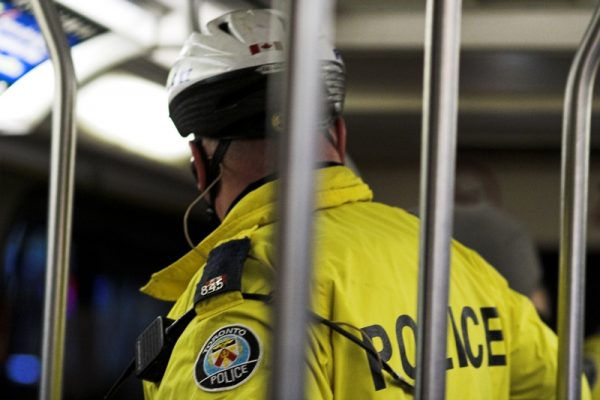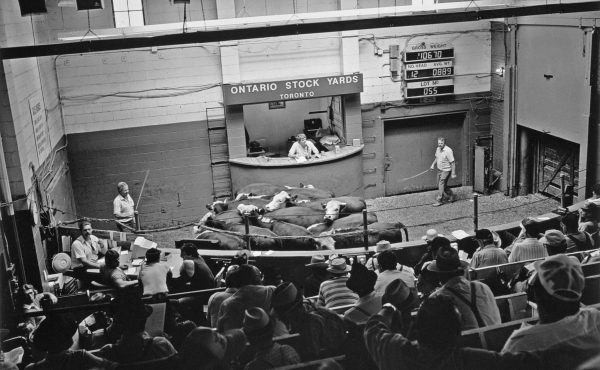How safe is the TTC? Notwithstanding a media narrative that is solidifying faster than quick drying cement, the quick answer to this question is: very.
According to the latest CEO’s report, the rate of offences against customers in January was just under two in 1-million boardings, and that number had been more or less the same for much of 2022, with some ups and some downs. The rate was higher early in the pandemic, while in before-times, the figure hovered around .63 per million boardings.
In other words, the frequency went up. But the variation is extremely slight. How slight? The TTC sent me monthly numbers last week. Between 2017 and early 2022, the offences against customers figures vary from about 40 reported incidents per month to over 80, with a few much lower totals in March and April, 2020. But measured against all boardings — the daily average ridership at present is just under 800,000, so we’re talking about tens of millions over a month — the difference between the high and the low is, well, statistically insignificant, even if you are a frequent user.
Of course, there’s nothing insignificant about each individual attack. A woman died. Others have been stabbed, hospitalized, accosted or had their sense of personal safety shattered. The aftermath of these attacks spreads like an ink blot, to family and friends and neighbours and co-workers. For some, it will be indelible.
Yet context should be important, and so here are a few more comparisons: You are quite a bit more likely to be assaulted on the TTC than to win the lottery. You are far less likely to be killed in a plane crash or in a car accident (my tweet from last week on this comparison was completely wrong, as several followers pointed out). As for your lifetime risk of developing cancer — it’s significantly greater than being caught up in violence on the TTC.
In a charged atmosphere where everyone is reaching for solutions, none of this contextualizing seems to matter. Some reports have raised the spectre of Toronto falling into downward spiral like New York City in the 1970s. Others ratchet up the sense of menace: “Once blank transit spaces are now filled with anxiety,” as one headline asserted. The media coverage, in fact, has been long on heat and short on light, almost to the point of distortion. Case in point: the incidents that have received the bulk of the coverage took place in the subway or on streetcars, but the TTC’s monthly data suggests that reported injuries are more prevalent on buses, and that number has been rising.
Unsurprisingly, there are now all sorts of armchair theories in circulation about the causes — mental illness and homelessness seem to be at the top of the list. But the reality is that no one has established a causal pattern or a set of common denominators beyond the fact that there’s been a cluster of attacks, which, in turn, has brought additional media attention to lesser incidents that normally wouldn’t bob to the surface in the day’s news cycle, thus prompting some to avoid the TTC.
The media coverage last week spurred a political response, the most notable element of which is the city’s decision to deploy more uniformed security personnel and cops in visible locations. Yet it’s a huge system, with millions of riders and hundreds of stations and stops. Will a few dozen uniformed officers make a difference, or will this showy gesture mostly lead to more homeless people riding the TTC being, ahem, shown the door — you know, just in case.
I suppose it’s inevitable that no politician is willing to swim against the tide of the news coverage or make even a half-hearted attempt to encourage transit users — and the city more generally — to consider their actual risk. But by failing to send these signals, they’re courting the parallel risk that comes with the avoidance of public spaces like the TTC.
The issue of the perception of the risk of urban danger — and the media’s role in stoking public fear — is nothing new, of course. There are countless studies and surveys on why these attitudes are formed and how media consumption habits not only reinforce public anxieties, but also affect the way people use public space.
Perhaps the most consequential and also the most misleading example: a 1964 story in the New York Times, by future editor-in-chief Abe Rosenthal, about how dozens of people who apparently heard the shrieks of a young woman being brutally attacked didn’t come to her aid. The story spawned a cottage industry dedicated to the phenomena of the so-called “bystander effect,” but the story — which articulated the sense of fear of random violence that helped gut New York in the 1970s — also turned out to be false, as the Times acknowledged in 2016.
Now, as then, we are living through a fear-infused moment. During the pandemic, we all had a crash course in how to respond to the potentially grave health risks posed by COVID, and then a second crash course in how social media succeeded in amplifying, distorting and misinforming people about said risk, to the point where public health officials and statistics culled from reliable sources struggled to compete with the conspiracy theories advanced by the do-your-own-research crowd. One particular result: that many people abandoned public transit for fear of contagion, notwithstanding a substantial amount of evidence that transit systems tended not to be especially risky.
Here’s a somewhat different example: perceptions of risk and danger related to aggressive driving, and the incidence of cyclist and pedestrian collisions, injuries and fatalities. As with violent incidents on the TTC, the absolute number of fatalities (70 last year) is very small relative to the total number of trips taken, either by car, by bike or on foot. (No one systematically tallies non-fatal collisions.)
The perception of risk, however, is justifiably informed by the prevalence of near misses and/or confrontations with aggressive drivers that don’t result in injury. I’d guess — admittedly without statistical evidence — that the direct experience of cyclists and pedestrians with aggressive or distracted drivers is likely far higher than commuters’ direct experiences with violent incidents on the TTC.
After a great deal of advocacy, the City finally began to implement a Vision Zero plan which included measures that can directly impact the specific risks identified by those using public roadways: segregated bike lanes, reduce speed limits, more traffic signals, pedestrian priority lights, etc. There’s a lot more to do, needless to say, but the solutions aren’t shots in the dark or speculative. We know how to make roads safer, and these are among the ways to do it.
Do we have a similar set of answers for whatever it is that ails the TTC? No. We’re not even sure that what’s happened in the past month or so is systemic or symptomatic of a set of underlying conditions that can be identified and then addressed.
Instead, commuters and politicians are taking their cues from hyper-ventilating news coverage that has raced to fill the vacuum by imposing a set of explanations on what might simply be a random series of discrete events — tragic and painful events, yes, but not connected to one another except for the fact that they mostly happened in January.
I know this isn’t a popular view, but it feels like we’re all jumping to conclusions, including those who have platforms and influence. So here’s my question: Would it be so difficult for either city officials or the media to go out of their way to remind Torontonians that the TTC is — still — incredibly safe by almost any measure?




One comment
To be fair, the incidence rate nearly quadrupling between 2019 and now, coupled with the continuing return of transit riders, mean that there are objective many more incidents happening on the system. If you calculated the absolute number of incidents (factoring in ridership) I suspect it would be a strong upward trend.
Most people don’t hear about a murder on the subway and think “oh well more people are riding now so my statistical likelihood is lower now”. They think about getting a car.